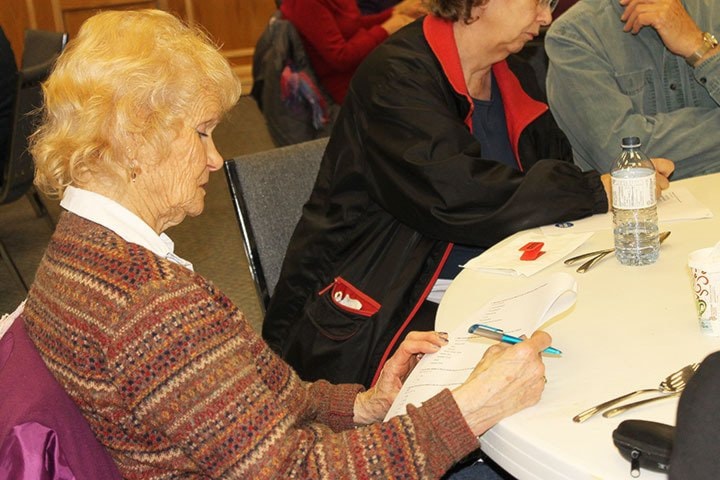According to the latest batch of data released from Statistics Canada’s 2016 census, the population of Burns Lake has become older in the past five years.
While the medium age of the Burns Lake population was 34 in 2011, the medium age in 2016 was 39. The number of people 85 and over increased from 40 to 75 while the number of residents under the age of 14 decreased from 455 to 355.
Although currently 15 per cent of the Burns Lake population is over 65, the Village of Burns Lake expects that 25 to 30 per cent of the population will be 65 and older by 2025.
Lakes District Seniors Society members have expressed their concerns over the lack of independent living options in the community. Earlier this year, the village received $10,000 from UBCM’s 2017 age-friendly communities grant program to hire a consultant to complete a seniors housing feasibility study. According to a village staff report, the feasibility study will assist the municipality to prepare for seniors housing requirements “before it becomes a crisis.”
According to 2016 census, the population of Burns Lake decreased by 250 people between 2011 and 2016 - from 2029 to 1779 persons (Statistics Canada does not include the First Nations population living on reserve). Historical data shows that the local population hasn’t been this low since 1990, when there were 1719 people living in Burns Lake.
Despite these numbers, Burns Lake’s official community plan (OCP) anticipates a population growth of one per cent over the next 10 years - which would result in a population of 2282 by 2025.
“This level of growth may not materialize; however, it is reasonable and responsible to plan for such growth,” says the OCP.
According to local realtors, northern B.C. communities have seen increasing interest from Americans fleeing Donald Trump and people frustrated with the housing bubble in the Lower Mainland. An inventory of existing residential parcels within Burns Lake last year found 66 vacant parcels that could be “relatively easily developed” for residential purposes.
Seniors outnumber kids in B.C.
British Columbia now has many more seniors than children, according to Statistics Canada data released last week.
The federal agency’s numbers show that 18.3 per cent of B.C. residents are 65 and over, compared to 14.9 per cent who are 14 and younger. This demographic shift pushes the province’s average age to 42.3 years – younger than only the Maritimes. Canada-wide, 16.9 per cent of all residents are 65 and older.
The 2011 was the first year in which seniors outnumbered children in B.C. but at the time, the gap was just over 11,000. In 2016, seniors outnumbered children by just over 150,000. According to Statistics Canada, the sharp increase in seniors correlates with baby boomers hitting retirement age while the slow growth in children is due to decreasing fertility rates.
Rennie Group senior economist Ryan Berlin believes that the fear over too many baby boomers is overinflated. He points out that even in 2016, the number of generation Xers, the generation after the boomers, outnumbers the them.
“We’re not adding boomers, we’re losing them,” he added.
The concern over how long the boomers are living is also mostly misplaced, Berlin said.
“Because we are living longer, we will always have more people in our older age groups than we had in the past,” he said.
Longer lifespans have played a role in increasing the both percentage of seniors in B.C. and raising the ratio of women to men. In 2016, women made up 60 per cent of the province’s population – just slightly above the Canadian average of 50.9 per cent.
In the 65 and older age grouping in B.C., there were 453,425 women and just 395,555 men – a difference of almost 60,000. The only age category in which there are more men than women is children 14 and younger and there the difference is just just under 30,000.
- With files from Katya Slepian
